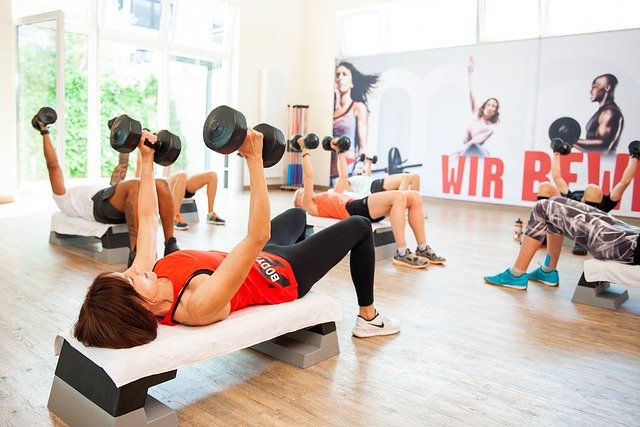The Future of Fitness: Aerobics Classes in 2025
Aerobic exercise has been a popular form of fitness for decades, and as we look towards 2025, it's clear that this tried-and-true workout method is evolving to meet the needs of modern fitness enthusiasts. With advancements in technology, changing lifestyle preferences, and a growing emphasis on holistic health, aerobics classes in 2025 are set to offer exciting new experiences and benefits. This article explores the trends, innovations, and expected developments in aerobics lessons for the year 2025, providing insights into how this classic exercise form is adapting to the future of fitness.

How will technology enhance aerobics classes in 2025?
As we approach 2025, technology is poised to revolutionize the aerobics experience. Virtual reality (VR) and augmented reality (AR) are expected to play a significant role in creating immersive workout environments. Participants may find themselves “transported” to exotic locations or fantastical worlds while following their instructor’s lead. Wearable devices will likely become more sophisticated, providing real-time feedback on form, heart rate, and calorie burn, allowing for more personalized and effective workouts. Additionally, AI-powered virtual instructors could offer 24/7 access to guided aerobics sessions, making it easier for people to fit exercise into their busy schedules.
What new aerobics formats can we expect in 2025?
The aerobics landscape of 2025 is likely to feature a diverse array of innovative class formats. Hybrid classes combining aerobics with other disciplines such as martial arts, dance, or even mindfulness practices may become more prevalent. We might see the emergence of “eco-aerobics,” where participants engage in high-energy workouts while simultaneously contributing to environmental causes, such as generating electricity through movement. Gamified aerobics classes could also gain popularity, turning workouts into interactive, competitive experiences that keep participants motivated and engaged.
How will aerobics classes adapt to changing lifestyle needs?
In 2025, aerobics classes are expected to become more flexible and adaptable to diverse lifestyles. With the rise of remote work and digital nomadism, we may see an increase in on-demand, mobile-friendly aerobics platforms that allow people to join live or pre-recorded classes from anywhere in the world. Short-format classes, ranging from 10 to 30 minutes, could become more prevalent to accommodate busy schedules. Additionally, aerobics programs tailored for specific demographics, such as seniors, new parents, or individuals with chronic health conditions, may see increased development and popularity.
What role will community play in 2025 aerobics lessons?
Despite the rise of digital platforms, the social aspect of aerobics classes is likely to remain a crucial element in 2025. We may see an increase in hybrid models that combine in-person and virtual participation, allowing friends and family members to work out together regardless of their physical location. Social media integration could enable participants to share their achievements, compete with friends, and form online communities around their favorite aerobics classes or instructors. Community-based challenges and events might also become more prevalent, fostering a sense of connection and shared accomplishment among participants.
How will aerobics classes in 2025 focus on holistic health?
In 2025, aerobics classes are expected to place a greater emphasis on overall well-being, not just physical fitness. Classes may incorporate elements of mental health, such as stress reduction techniques or mindfulness exercises, alongside traditional cardiovascular workouts. Nutritional guidance could be integrated into aerobics programs, with personalized meal plans or post-workout snack recommendations. We might also see a rise in “recovery-focused” aerobics sessions that combine low-impact cardio with stretching, foam rolling, or other restorative practices to promote better overall health and prevent injury.
What will be the cost and accessibility of aerobics lessons in 2025?
As aerobics classes evolve and incorporate new technologies, the pricing structure is likely to diversify. Here’s a comparison of potential aerobics class options and their estimated costs in 2025:
| Class Type | Provider | Estimated Monthly Cost |
|---|---|---|
| Traditional In-Person Classes | Local Gym | $50 - $100 |
| Virtual Reality Aerobics | Tech Fitness Co. | $75 - $150 |
| AI-Powered Personal Trainer | FitTech App | $30 - $60 |
| Hybrid In-Person/Virtual Classes | Global Fitness Chain | $80 - $120 |
| On-Demand Mobile Platform | Aerobics Anywhere | $15 - $40 |
| Eco-Aerobics Program | Green Gym Initiative | $60 - $90 |
Prices, rates, or cost estimates mentioned in this article are based on the latest available information but may change over time. Independent research is advised before making financial decisions.
While some high-tech options may come with premium price tags, the diversification of aerobics offerings is likely to improve overall accessibility. Budget-friendly options such as community-led classes or basic subscription services may help keep aerobics accessible to a wide range of individuals. Additionally, employer-sponsored fitness programs and health insurance incentives could help offset costs for some participants, making regular aerobics practice more attainable for many.
As we look towards 2025, it’s clear that aerobics classes are set to undergo exciting transformations. From technological advancements to innovative formats and a renewed focus on holistic health, the future of aerobics promises to offer something for everyone. While the core principles of cardiovascular fitness and energetic movement will remain, the ways in which we engage with and benefit from aerobics are likely to expand significantly. As these changes unfold, one thing remains certain: aerobics will continue to play a vital role in helping people achieve their fitness goals and maintain overall health and well-being in the years to come.




